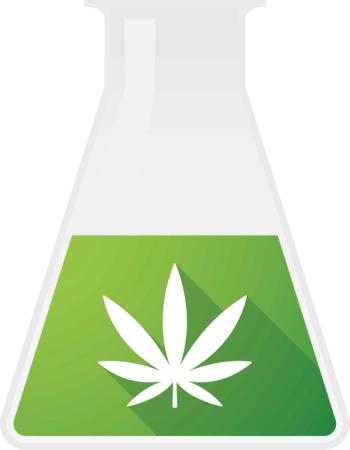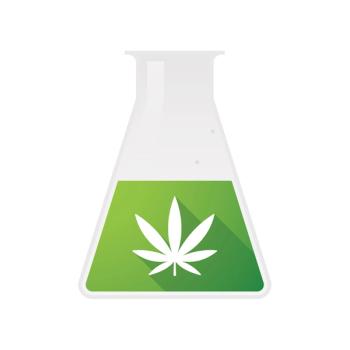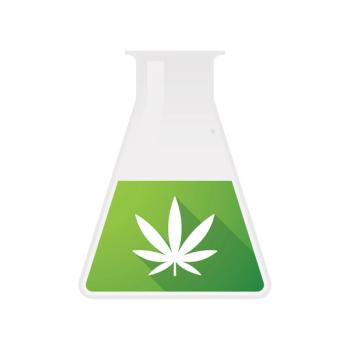
In part I of this series on statistical concepts related to cannabis analysis, we introduce the normal distribution, standard deviation, and how to calculate precision and accuracy.

Brian C. Smith, PhD, is Founder, CEO, and Chief Technical Officer of Big Sur Scientific. He is the inventor of the BSS series of patented mid-infrared based cannabis analyzers. Dr. Smith has done pioneering research and published numerous peer-reviewed papers on the application of mid-infrared spectroscopy to cannabis analysis, and sits on the editorial board of Cannabis Science and Technology. He has worked as a laboratory director for a cannabis extractor, as an analytical chemist for Waters Associates and PerkinElmer, and as an analytical instrument salesperson. He has more than 30 years of experience in chemical analysis and has written three books on the subject. Dr. Smith earned his PhD on physical chemistry from Dartmouth College. Direct correspondence to: brian@bigsurscientific.com

In part I of this series on statistical concepts related to cannabis analysis, we introduce the normal distribution, standard deviation, and how to calculate precision and accuracy.

The inter-laboratory variation problem still exists, which means laboratory certification is necessary, but not sufficient to guarantee your samples are analyzed properly. Here, Smith offers suggestions to help improve the situation.

How can cannabis businesses start formulating like the pharmaceutical industry and why it’s important to do so.

A number of misconceptions people have about how to test, what to test, and when to test in the cannabis industry are dispelled.

Why the USDA’s requirements on what part of the plant to sample and how to obtain samples from the field are rife with problems and how to solve them.

Mislabeled cannabis medicines are an on-going problem; here we discuss appropriate technologies for cannabis dispensaries to do their own testing.

This column discusses where the USDA went wrong in their final rule regarding hemp and how the author thinks it can be fixed.

A discussion on how extractors need to monitor the chemical processes they perform.

How will the need for increased testing impact extractors?

What does FDA oversight mean for cannabis businesses and the industry as a whole?

Suggestions on how to deal with the problem of inter-laboratory error in the cannabis industry.

Here a scientifically based representative sampling plan for hemp grows is presented, detailing how to collect composite samples, how many to collect, and how to analyze them.

A novel mid-infrared spectrometer that measures total THC in dried, ground cannabis plant material in 2 min is discussed as well as the applications of this analyzer for law enforcement, forensic laboratories, and regulatory agencies.

A proper set of hemp standard reference materials courtesy of the University of Kentucky are now available and the implications of this for hemp testing are discussed.

Why are those extra decimal places possibly meaningless? How can you use significant figures to discern the true meaning of your cannabis analysis measurements?

How can we solve hemp testing problems such as representative sampling, composite samples, and insuring there will be enough testing capacity to meet the demand?

Inter-laboratory variation has been studied extensively. Here, ideas on how to improve the situation are presented, particularly standardizing sample preparation methods.

An introduction to the basic concepts of instrument calibration and a look at how instruments are calibrated, how to measure their quality, and more.

Applications of a quantitative mid-infrared spectrometer for hemp farmers, hemp extractors, state regulators, and law enforcement are discussed.

An introduction to these techniques and an analysis of their advantages and disadvantages for potency analysis.

A number of causes of hemp testing insanity are documented such as different states using different THC measures to determine legality, lack of representative sampling, and more.

What changes need to be adopted in our industry to make the transition to the pharmaceutical industry testing paradigm?

What changes need to be adopted in our industry to make the transition to the pharmaceutical industry testing paradigm?

Cannabis laboratories can get different results on identical samples. In this article, the author explains solutions to those problems.

Too often, cannabis laboratories get different results on the same sample. There are a number of causes and solutions. In this installment, the problem is presented along with its causes.

Cannabis distillate samples spiked with known amounts of pesticides were submitted to five cannabis testing laboratories-here are the results.

Learn why your sample needs to be stable, homogeneous, and representative of the batch from which it is taken.

Find out if you know the difference between accuracy and precision

In this first installment of the "Cannabis Analysis" column, the author introduces himself and the goals for the column.